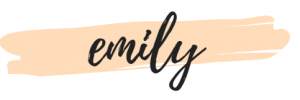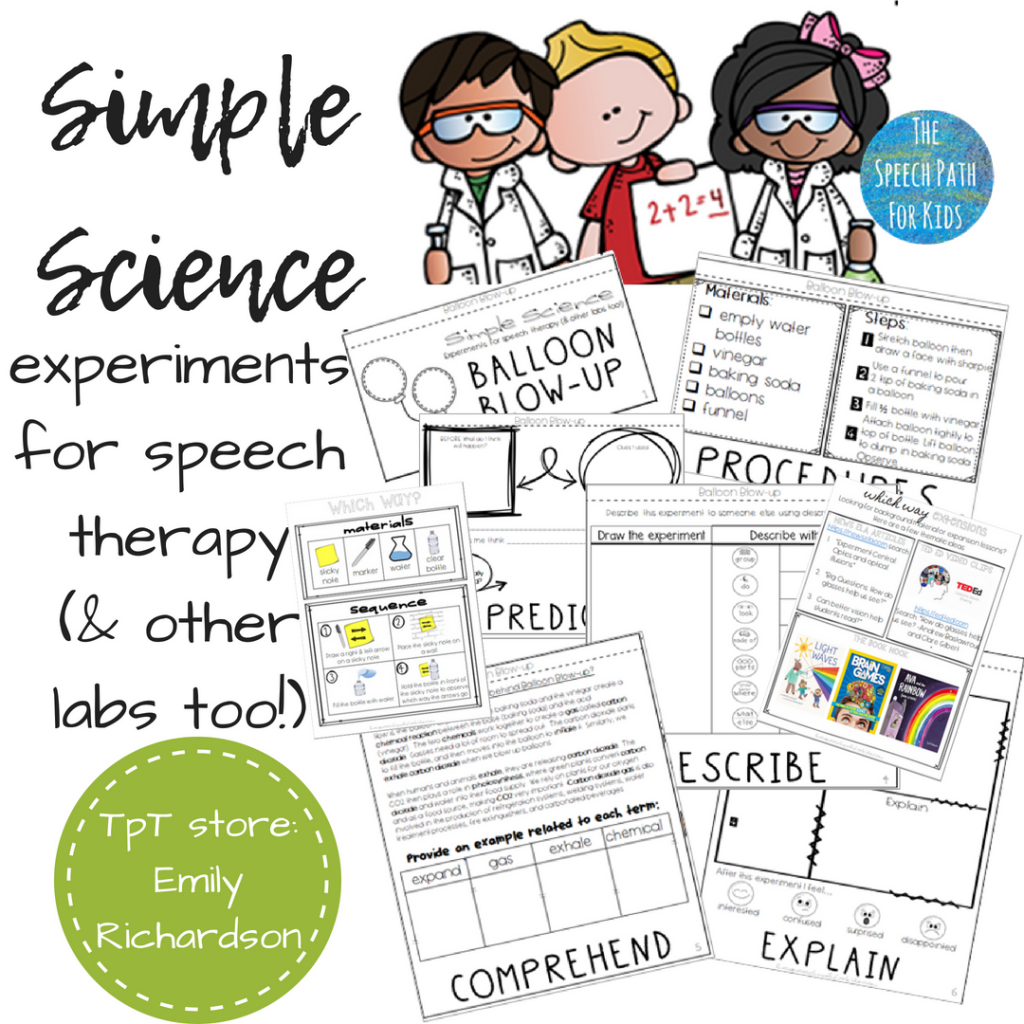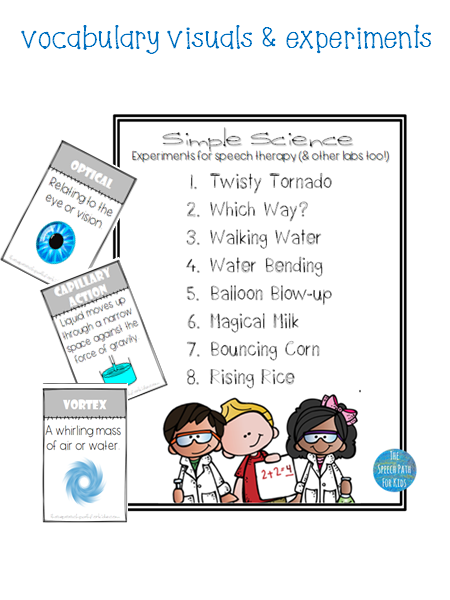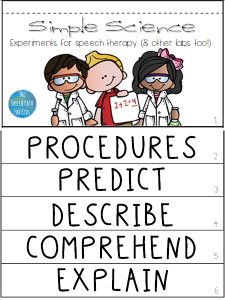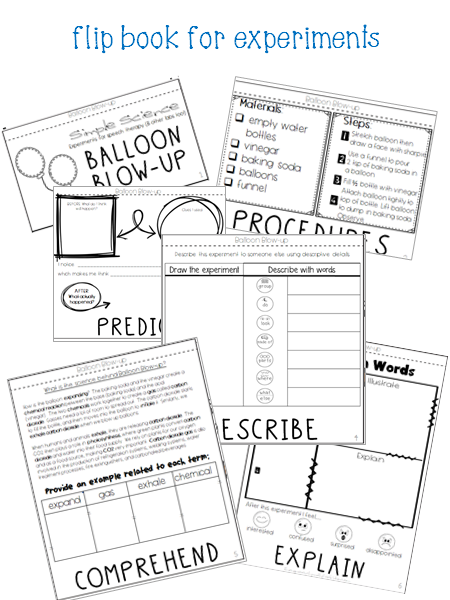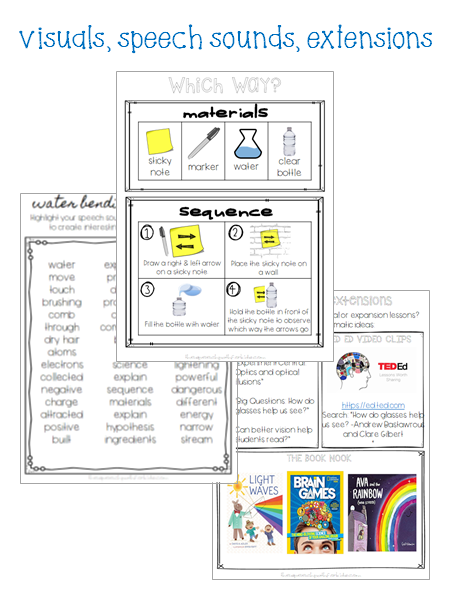OOOOHHH, I am so excited about this new set of experiments! I absolutely love it when I know I can utilize the same format for a lesson while rotating the content all year long. My kids love to watch the animal and science shows on Saturday mornings, and DIY SCI with Steve Spangler catches the attention of us all! That interest was the springboard for this packet. I chose these 8 particular experiments with this in mind: simple steps, everyday materials, multiple repetitions throughout the day, and engaging science.
There are 8 different experiments that you can space throughout the year. We all have our academic interests and strengths…science is not on the top of my list (I’m much more a social studies/travel girl!). So these picture vocabulary cards are as much of a refresher for me as they are a teaching tool for students!
The flip books cover language content of procedures, predicting, describing, comprehending (the science behind it), and explaining. Formats include drawing, highlighting, and writing. Science concepts include: vortex, refraction, capillary action, static electricity, electrical charges, chemical reactions, carbon dioxide, density, and friction.
Each flip book also has a related science fun fact and joke bookmark (to eliminate wasted space from the formatting of a flip book).
Everything I do needs to be accessible by a wide range of learners. So I added a few visuals to help every learner with comprehension and expression during the experiments. You will find all materials on one page (I put in a sheet protector and students can circle the materials we used for that experiment) as well as a one page sheet specific to each experiment. Some of my groups will do the experiment using the visual cards for materials and sequence and we will just have a group version of the flip book (instead of making individual ones). The half card with the sequence can be used in many ways, including cutting apart and re-ordering to retell the experiment.
You’ll also find a list of related vocabulary/speech sounds for each experiment. (I print this double sided to the last page of the flip book or you could make it a separate sheet). Maybe you have a mixed group, or just want to include an experiment in your articulation lesson, these sheets give an added way to concentrate on speech sound practice. It wasn’t reasonable to isolate and sort vocabulary by all sounds because they just aren’t always naturally there. Instead I included 45 words with a higher frequency of r, s, l, th (sh, ch, j when I could). It’s a mixed bag.
Each experiment has a page of ideas for background knowledge or extended learning. There are ideas for News ELA articles, TedEd videos, and picture books. Some of the books are inspired by the materials, others by the science. Don’t forget, you can sign up for free on NewsELA and each article has 5 different reading levels…perfectly customizable for mixed groups! The ideas on this page are to give you some resources that you might find useful for some students wither in class or to share with parents for home learning opportunities.
Enjoy bringing a little science into your speech therapy!
